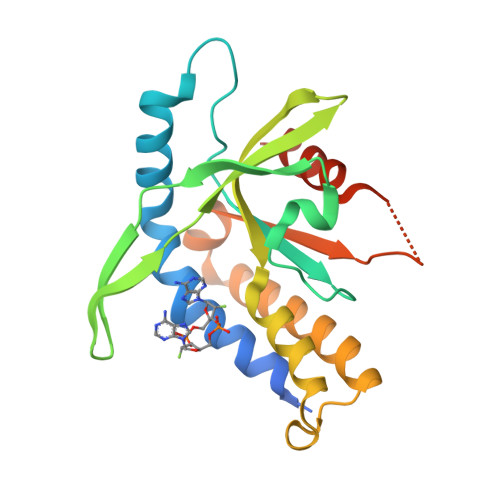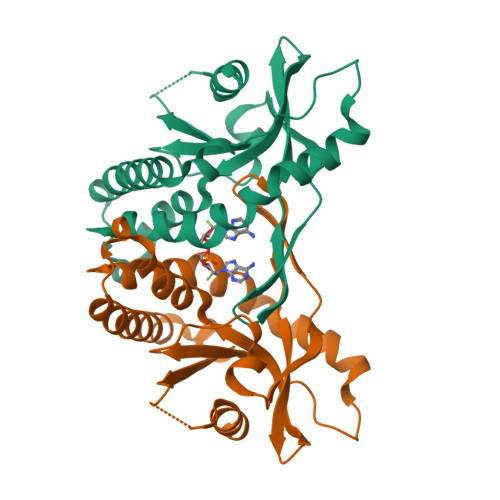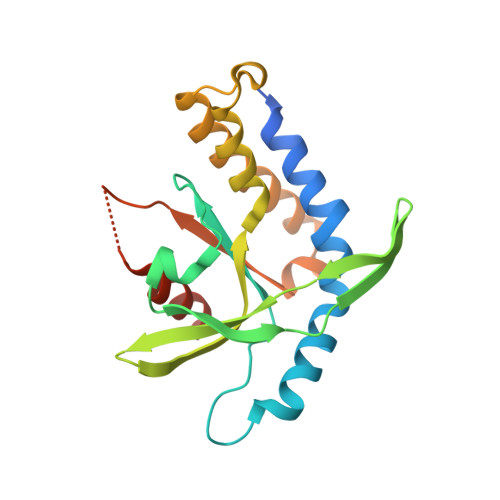Ligand Strain and Its Conformational Complexity Is a Major Factor in the Binding of Cyclic Dinucleotides to STING Protein.
Smola, M., Gutten, O., Dejmek, M., Kozisek, M., Evangelidis, T., Tehrani, Z.A., Novotna, B., Nencka, R., Birkus, G., Rulisek, L., Boura, E.(2021) Angew Chem Int Ed Engl 60: 10172-10178
- PubMed: 33616279
- DOI: https://doi.org/10.1002/anie.202016805
- Primary Citation of Related Structures:
6Y99, 6YDB, 6YDZ, 6YEA, 6Z0Z, 6Z15 - PubMed Abstract:
STING (stimulator of interferon genes) is a key regulator of innate immunity that has recently been recognized as a promising drug target. STING is activated by cyclic dinucleotides (CDNs) which eventually leads to expression of type I interferons and other cytokines. Factors underlying the affinity of various CDN analogues are poorly understood. Herein, we correlate structural biology, isothermal calorimetry (ITC) and computational modeling to elucidate factors contributing to binding of six CDNs-three pairs of natural (ribo) and fluorinated (2'-fluororibo) 3',3'-CDNs. X-ray structural analyses of six {STING:CDN} complexes did not offer any explanation for the different affinities of the studied ligands. ITC showed entropy/enthalpy compensation up to 25 kcal mol -1 for this set of similar ligands. The higher affinities of fluorinated analogues are explained with help of computational methods by smaller loss of entropy upon binding and by smaller strain (free) energy.
Organizational Affiliation:
Gilead Sciences Research Centre at IOCB, Institute of Organic Chemistry and Biochemistry of the Czech Academy of Sciences, Flemingovo náměstí 2, 16610, Prague, Czech Republic.



















